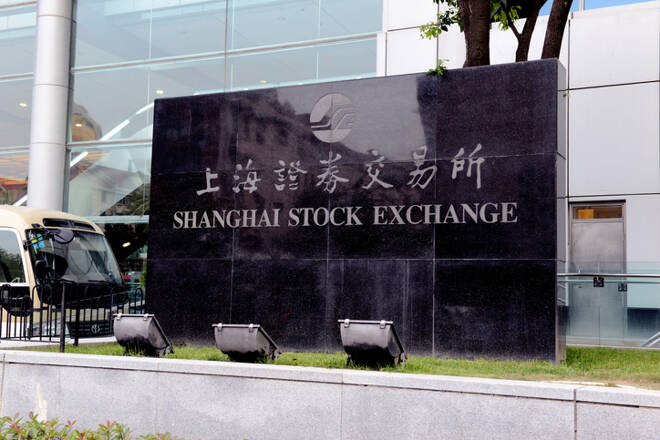Advertisement
Advertisement
Chinese Stocks Beat Wall St in 2019; Blue Chips Soar More than 35%
By:
The rally could run into problems in 2020 if China’s inflation increases so much that the government has to pullback some of its stimulus. Furthermore, foreign investors may decide to diversify back into domestic stocks. And of course, there could be issues with compliance with the trade deal that could make investors nervous.
The U.S. stock indexes grabbed most of the attention in 2019 with the benchmark S&P 500 Index finishing the year up 28.9%, its biggest one-year gain since 2013, when it rallied 29.6%. The blue chip Dow Jones Industrial Average gained 22.13 in 2019, its best annual performance since 2017 and the technology-based NASDAQ Composite, posted its best one-year performance in six years, rallying 35.2% in 2019.
However, equally impressive was the rally in China’s stock market, which dug its way from the bottom of the major global index rankings toward the top of the heap in 2019. It got there by posting a 35% jump in the main blue chip index.
Just like the U.S. market relied on strong consumer buying and the precision timing of the Federal Reserve’s three rate cuts to defeat the negative impact of the prolonged trade war between the United States and China, Chinese investors largely shrugged off the economic damage wreaked by the Sino-U.S. trade war by chasing consumer and technology stocks, encouraged by Beijing’s stimulus and bold capital market reforms.
On the last day of trading in 2019, China’s blue chip CSI300 Index traded near an eight-month high at 4,082.56 points, up 35.6% from the start of the year. The Shanghai Composite Index was up 21.8% for the year, trading at 3,038.26 points.
Big Contrast to 2018
“At the end of 2018, investors were dumping stocks amid fears of an unprecedented trade war. Today, investors are more composed, knowing all the cards Washington has, and more confident of the Chinese government’s counter-measures,” said Wu Kan, head of equity trading at Shanghai-based Shanshan Finance.
2019 Roller Coaster Ride
Chinese stocks were down 25% in 2018, its worst performance among major markets after U.S. President Donald Trump formally launched a tariff war with China. But China’s CSI300 rebounded 28.6% in the first quarter, as investors gobbled up beat-up shares while Washington and Beijing moved toward a cease fire.
The first leg of last year’s rally stalled in early May after trade talks stalled, with Chinese stocks treading water while the negotiations went nowhere. The market resumed its uptrend when the United States and China announced Phase 1 of the trade deal on December 13.
Will the Rally Continue in 2020?
Wu Kan cautioned there are already signs of overheating in some sectors, such as consumer and technology. He predicts volatility in 2020.
China’s economy has also ground to its weakest pace in three decades last year, but the market was saved by Beijing’s stimulus measures, bold market reforms, and heavy foreign inflows.
The rally could run into problems if China’s inflation increases so much that the government has to pullback some of its stimulus. Furthermore, foreign investors may decide to diversify back into domestic stocks. And of course, there could be issues with compliance with the trade deal that could make investors nervous.
About the Author
James Hyerczykauthor
James Hyerczyk is a U.S. based seasoned technical analyst and educator with over 40 years of experience in market analysis and trading, specializing in chart patterns and price movement. He is the author of two books on technical analysis and has a background in both futures and stock markets.
Advertisement
